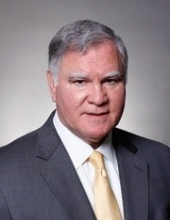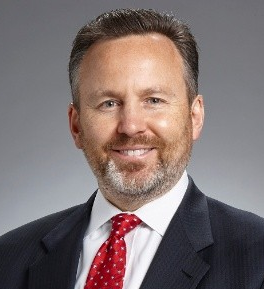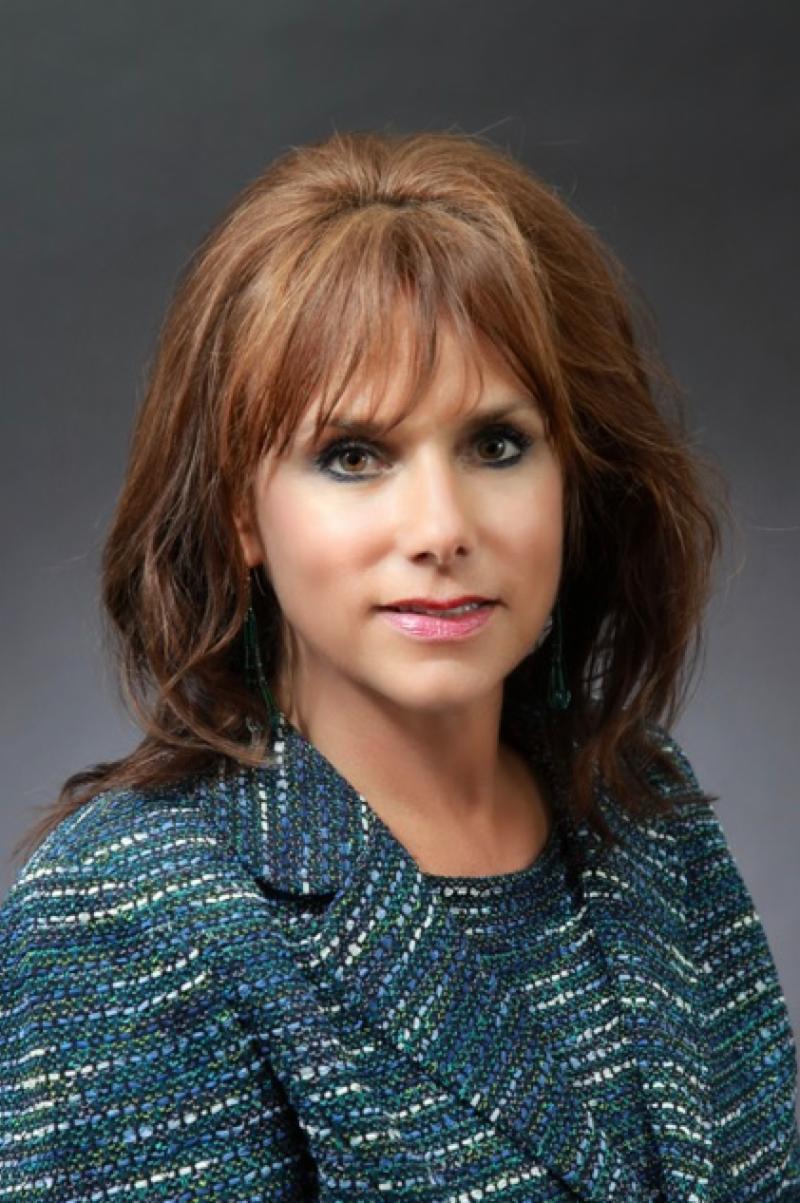|
Message from the President
|
|
Brendan G. Best, TMA Detroit Chapter President
|
While normally this column is filled with updates regarding our Chapter and upcoming events, I am going to break with that tradition and pause for a moment to acknowledge the passing of a dear friend to many of us and the quintessential example of a turnaround and insolvency professional, Chuck Taunt, who passed away on March 13. I am sure that I join so many of you in the sadness that we feel for his passing but also the great memories of him that we all have. Those memories bring into our hearts a little bit of the compassion and joy that seemed to naturally emanate from Chuck. He is survived by his beloved wife of 33 years, Cheri and his loving children, Charles J. "Chip" (Katie) Taunt, Jr.; Sarah (Jim) Russell; Daniel (Erika) Hart; Matthew (Meredith) Taunt and Jay Taunt. 
Brendan G. Best
President - Detroit Chapter
|
|
By Scott Y. Stuart, Esq.
When I first visited the Detroit Chapter, one of the board members reminded
 me that "Detroit is the first to lead the country into recession and the first to lead it out." That got me thinking of the importance of this chapter as a bellwether and how chapter connectivity is so critical to the success of TMA. me that "Detroit is the first to lead the country into recession and the first to lead it out." That got me thinking of the importance of this chapter as a bellwether and how chapter connectivity is so critical to the success of TMA.
With the wind at our backs and this year of opportunity in full swing, your chapter is one of the leaders in what will come next for our professionals. And in my travels during the 2019 TMA Big Tent Tour, I impart the importance of the Detroit Chapter for so many reasons.
The Detroit Chapter leads the conversation on automotive, one of our most volatile industry sectors. It also is a great message
point for why restructuring professionals in the region are missing opportunities if they are not engaging with TMA.
At TMA Global we know the value of our chapters, and we are building resources for all our members to access as part of our efforts to create a more valuable and connected experience for all of you. One example of this comes from the connection made between your chapter president, Brenden Best, and our Mexico Chapter president, Floris Iking, who together are exploring a joint education program because of the automotive sector link between the two chapters.
I travel near and far for you. I connect to all members through my podcasts, TMA Talks and CEO Speaks, so that you are more connected, informed, and engaged. And we at Global will continue to support and aid endeavors that provide value to all of our members.
I ask that you, as TMA members, be our ambassadors on the ground. For no one chapter can stand alone and in isolation. We must grow together and support each other. Beyond that, we must educate those who know of TMA but do not grasp its value as the most professionally diverse organization in the restructuring and renewal and corporate health space.
We at TMA are better together, and I know you as a Midwest chapter will all want to be engaged and involved in making our 2019 Annual Conference in Cleveland a great success. Be part of this conversation and help me spread the word about what a first-class conference this will be.
Lastly, be engaged, both at your chapter level and beyond. There are opportunities throughout our Global network to be involved on committees and special projects. Not only does this make your volunteerism more valuable, but it also opens a world of opportunity through the knowledge you gain that can only aid in the growth of your chapter.
I look forward to your engagement, and do know that TMA Global, and I, am here for you. Reach out, connect, and engage. I am happy to help, and it would be my great honor and privilege to do so.
|
|
Bank Mergers: Just a Ripple or a Larger Wave?
By John L. Klehm
|

We have seen several bank merger announcements recently, including one involving two sizable regional banks operating in Michigan. Bank M&A activity seemingly goes in waves and, based on the opinions of Wall Street analysts, the wave is likely to grow. The CEO of Bank of America, agrees. In a January edition of America Banker he noted, more consolidation is coming.
Recent Merger Activity
In the past 18 months or so there have been several bank mergers in the Michigan market or notable national deals, announced or consummated:
- In 2018 Fifth Third Bank and MB Financial agreed to merge, expected to close in early Q2 2019. Two sizable regional banks in a deal valued at $4.7 billion greatly enhancing Fifth Third's Chicago presence, moving it up to 4th place in terms of market share.
- In January 2019 SunTrust announced it was buying BB&T, the largest bank merger in a decade, creating a $442 billion bank, sixth largest in the US.
- In February 2019 Chemical Bank and Minnesota based TCF agreed to merge, creating a $45 billion Detroit based larger regional bank.
- In 2018 Michigan based Independent Bank acquired Traverse City State Bank in 2018, a $63 million transaction that helped fill out Independent Bank's footprint and increase their position in attractive markets.
- In 2018, Crestmark Bank was sold to Metabank of South Dakota, giving Metabank commercial lending expertise which can be expanded nationally.
- In early 2019, Sterling National Bank acquired Woodforest National Bank's Asset-Based Lending and Equipment Finance Groups, expanding Sterling National Bank's footprint and expanding its product offerings.
Forces Driving Banks to Combine:
Comments from banking industry analysts and activist investors, powerful forces are at play, such as future technology investment demands, relaxation of banking regulations, slowing organic growth and activist investors pushing banks to raise underperforming stock prices.
- Technology investment requirements of the future. Banks are investing billions of dollars to upgrade IT and protect data as well as improve mobile banking and digital customer experiences. JP Morgan Chase leads the industry with nearly $10 billion spent in each of 2016 and 2017 and over $10 billion in '18. Future technology investment was one of the key reasons given for the SunTrust BB&T combination.
- Organic growth is slowing. Cutthroat competition for customers means it might be cheaper and easier to buy your competition than grow organically. According to Bank of America Merrill Lynch analyst, Ebrahim Poonawala, "regional banks that are running out of steam and showing minimal or no organic growth will be pressured by investors to consider M&A deals to add scale.
- Dodd Frank banking regulations were eased in 2018, eliminating a reason regional banks have avoided merging. The minimum asset threshold for tighter Federal Reserve scrutiny was raised from $50 billion in assets to $250 billion. This removes a sizable barrier regional banks had seen as a disadvantage to combining. A recent Wall Street Journal piece noted that the recent Chemical TCF deal was a direct consequence of regulatory changes.
- Activist investors are prodding bank managements to buy or sell. Bank stocks have significantly underperformed the benchmark S&P 500. The regional bank ETF (KRE) is down roughly 15% from all-time highs vs. down 4% for the broader S&P 500. According to a recent article published by CNBC an established activist hedge fund investor was quoted looking to see regional bank combinations including four located in the Michigan market.
In the past year we have seen some notable bank mergers announced or closed, including a few in Michigan. Industry experts expect that more bank mergers are coming. Forces driving those combinations include increasing technology investment demands, slowing organic growth, looser banking regulations and pressure from activist investors. We will see what the future holds.
|
|
Membership Spotlight
Alex Calderone
|
Q: How did you get into turnaround/restructuring work?
A: I was first introduced to the field of turnaround consulting during my sophomore year of college (summer of 2001), while working as a technical intern for Conway MacKenzie & Dunleavy (CM&D). My father and Van Conway were close friends, so the internship opportunity emanated from that relationship.
I chuckle when I think back to how I got started in the turnaround business. The thing that nobody knows is that had my father not forced me to accept that technical internship from Van Conway, I probably would have ended up going down a completely different career path. I say this because during the prior summer, I worked as union laborer for a cement contractor-a job that paid between $20/hour and up to $40/hour for overtime. It was hard work, particularly when I had to spend three weeks working 12+ hour days pouring and raking concrete at a GM plant in Flint. That being said, the money was phenomenal for a college student. The CM&D technical internship only paid $11/hour, so I was upset about having to take on a job that paid less.
When I complained about this issue to my father, his advice was that sometimes we need to take steps backward in order to move forward in life. He was definitely right. That internship gave me a significant advantage over the rest of my business school peers. I was able to plan and navigate through my career path much earlier in life because of that experience.
Q: Is there a particular sub-area that you specialize in or prefer?
A: I realized early on in my career that the turnaround business was cyclical, so I've worked hard to hedge against the cyclicality by developing skillsets and obtaining professional accreditations and credentials that allow me to serve as a forensic accountant, valuation, and damages expert in the context of commercial litigation proceedings as well.
This diversification of my skillset has been particularly helpful in securing a steady project backlog during the past few years, given that the nearly 10-year long period of economic expansion has resulted in fewer bankruptcies and other out of court workout opportunities for turnaround practitioners to pursue.
Q: What have been some of your most gratifying or favorite engagements?
A: In general, any time I know that I've not labored in vain. As a consultant, I trade my time for money and that can be a bit frustrating since the older I get the less time I realize I have left. It feels good to make money, but it feels better to make money and save jobs or an owner's business at the same time.
Q: How did you get involved with the TMA? What role has your TMA membership played in your career?
A: The TMA was one of the first organizations I joined when I began my career as a turnaround practitioner. Over the years, I have been particularly active within the organization. I previously served as a board member of the Detroit NextGen chapter, Guest Editor for JCR (on three separate occasions), and on the national Educational Oversight Committee.
The TMA has helped me progress in my career in a number of different ways. From an educational perspective, the CTP credential, sponsored by TMA, has helped me stand out as someone who possesses the requisite skillset and prior work experience to serve as a credible C-level turnaround executive during distressed situations. From a marketing and networking perspective, the origins of many of my closest professional relationships can be traced back to TMA sponsored conferences and events.
Q: What advice would you have for someone who is new to the industry or is thinking about getting into the industry?
A: I think now, more than ever, the turnaround business will present particularly lucrative opportunities for new professionals. I say this for a few reasons. One is that the nearly 10-year long period of economic expansion in our country will come to an end at some point, and when it does, there will be a lot of opportunities available for turnaround professionals. The second is that we continue to find ourselves in an era of significant technological disruption.
Detroit, in particular, because of its exposure to the automotive industry will be a tremendous market for turnaround professionals. The industry's shift to electrification and autonomous vehicles, alone, will keep turnaround practitioners busy for years to come. Turnaround practitioners will be among the few groups of professional service providers that will benefit as business models shift across a number of different industries.
Q: What do you like to do outside the office?
A: When I'm not spending time with my wife and three children, I enjoy exercising and reading (and most of the time I do both at the same time). I also serve as an auxiliary police officer with the Birmingham, Michigan Police Department-working special events across the city and serving as back-up to full time officers on road patrols.
|
The Warning Light on the Dashboard: Automakers Are Reinventing Business Models
By Sheldon Stone, Partner
Amherst Partners
|
|
The automotive sector is entering a period that will result in fundamental changes to how business is conducted up and down the value chain. A convergence of new technologies, evolving consumer references, and business model shifts points towards new opportunities - and new risks - particularly for those businesses that currently supply goods and services to the OEMs. Preparing for these changes today might mean the difference between success and failure five or ten years down the road.
At first glance, things are running smoothly for the U.S. auto industry: the sector has experienced over 60% sales growth in the last decade. From a low of 10.4 million cars sold in 2009, the sector has largely recovered and experienced seven years of continual growth until 2016. Annual car sales have been steady since 2015, at or around 17 million.
The auto sector is facing some uncertainty in the near term, however, due to the U.S.-China trade dispute and a potential economic downturn, and forecasts for 2019 are mixed - although the National Automobile Dealers association has forecast 16.8 million new vehicle sales in 2019, the Economist Intelligence Unit expects car sales to drop by 3.6%, with commercial vehicles sales to edge down by 0.3%.
Change within the industry is also happening at a more fundamental level, as consumers are altering how they choose, purchase and use vehicles. Additionally, technological changes have shaped consumers' expectations, and they are increasingly demanding a "smart" personalized user experience inside their vehicles.
Changing Consumer Preferences Lead To New Business Models
Historically, auto manufacturers relied on a certain number of sales per household, selling most vehicles through dealerships as well as car rental agencies. Although sales are currently stable, the industry's business model is changing as follows:
A diverging path for smaller vehicles. U.S. consumers currently prefer to buy larger, heavier vehicles such as crossovers, SUVs and trucks. In 2018, the market share for sedans was at its worst level since 2009, falling below 30%. U.S. automakers have adjusted their lines accordingly, and nearly abandoned the sector. However, sedans continue to represent a sizeable proportion of the U.S. market, and long-term trends point towards an increasing market for lighter, more energy-efficient vehicles.
Direct-to-consumer car sales. This continues to be a controversial topic, as direct manufacturer auto sales are completely or partially prohibited in some states, but permitted (and regulated) in others, following challenges by electric automaker Tesla. While such restrictions were initially adopted to protect dealerships from coercive practices by manufacturers, and to increase competition among franchises, it is increasingly at odds with consumers who prefer to research and even buy their cars online. In 2015, the FTC came out in favor of direct sales to consumers, for any manufacturer, as it argued that "consumers would be better served if the choice of distribution method were left to motor vehicle manufacturers and the consumers." If this business model becomes more widespread in the future, it will likely impact pricing and profit margins.
Transportation as a service. Consumers - especially younger consumers - are increasingly choosing not to buy cars, instead relying on ridesharing and public transit, especially in areas with more access to these services. Car rental is also becoming less common, as consumers prefer the convenience of being picked up and dropped off in the location of their choice. In response to these changes, car manufacturers are increasingly looking to ridesharing services as potential clients. In 2016, GM invested $500 million in Lyft, and set out plans to develop a network of self-driving cars with the ridesharing service. GM has since expanded its car-sharing service, Maven, to 10 cities and is focusing on drivers for rideshare apps such as Uber and Lyft. Meanwhile, GM's subsidiary Cruise Automation is currently testing driverless food deliveries in partnership with DoorDash. Similarly, Toyota invested $500 million in Uber for self-driving cars, and $1 billion in southeast Asian ridesharing service Grab.
Although an economic downturn might slow the pace of technological investment, it could also accelerate some of the trends listed above, to the extent they are counter-cyclical. The more consumers need to be mindful about their expenses, the less likely they are to buy expensive vehicles, or to buy vehicles at all. Manufacturers are closely monitoring consumer preferences, not only as an indicator of potential economic headwinds, but also as a sign of potential business opportunities.
Electric, Autonomous Vehicles to Impact Automotive Value Chain
The auto sector is rapidly moving towards electrification and autonomous vehicles. Under the current growth trajectory, global sales of electric vehicles are expected to almost quadruple by 2020, to 4.5 million units or 5% of the global light-vehicle market. Additionally, global automakers are expected to launch approximately 340 models that are either electric or hybrid within the next three years, which should reduce supply as a barrier to adoption.
There are other barriers, particularly in the U.S. According to consulting firm Capgemini, U.S. consumers currently list battery capacity and the availability of charging stations as the biggest obstacles to purchasing electric vehicles. As for autonomous vehicles, American consumers are reportedly among the most reluctant to embrace the technology, due to concerns over safety, comfort and ease-of-use, with close to 25% of American drivers in one Ipsos survey saying they "would never use" an autonomous vehicle. Other notable barriers to adoption include a lack of support infrastructure, and data privacy.
However, consumers are also increasingly demanding a personalized user experience and in-vehicle connectivity, and younger drivers have more favorable views of autonomous cars and their benefits. These might include traffic congestion tracking and road-safety alerts, and could be more widely available if supported by regulation.
Developing, manufacturing, and selling electric and autonomous vehicles requires enormous investment from car manufacturers and suppliers. Although tech giants such as Apple and Google have also made large investments, car manufacturers and suppliers must generally contend with smaller profit margins. In the short term, these investments might decrease automakers' profitability, as consumers' appetite for electric or autonomous vehicles is tempered by lagging infrastructure and regulation, and uncertainty over the safety and effectiveness of new technology.
Automakers Embrace New Business Models
This is a critical junction in the auto sector, because the auto itself is being reinvented amid the arrival of new entrants, new technology and innovative business models. As a result, automakers are rethinking their relationship to consumers, suppliers, and dealerships.
Manufacturers and suppliers are currently making significant investments in vehicle connectivity, renewable fuel, and varying degrees of automation. Although some consumers are skeptical of autonomous vehicles, and cautious about the range of electric vehicles, global sales of these vehicle types are poised for rapid growth in the next few years.
The bottom line is that the automobile as a product is about to be reshaped from the inside out. Parts and services suppliers that have become accustomed to working with major manufacturers based on today's environment will need to adopt their own approach as well, or risk being left behind.
Copyright © 2019 Amherst Partners, LLC
|

Join us on May 10th for the presentation by Andra Rush, Founder, Chair and CEO
Rush Group of Companies, including Dakkota Integrated Systems, Rush Trucking Corporation an Rush Supply Chain Management.
Rush Group specializes in large-scale component manufacturing, complex assembly and sequencing, supply chain management, logistics and land transportation for global brands, and employs 3,000 team members. It is one of the largest Native American-owned and woman-owned enterprises in the U.S.
Rush's mission is to create profitable and sustainable career opportunities in underrepresented communities across the U.S. and Canada, including Illinois, Kentucky, Michigan, Ohio and Ontario.
Currently, Rush serves on the board of directors of Terex Corporation and on the Ford Supplier Council. She previously served on supplier advisory boards for Chrysler and General Motors. She also is an active member of business and charitable organizations, especially in her hometown, including Business Leaders for Michigan, Detroit Economic Club, Detroit Regional Chamber, Detroit Workforce Board, Downtown Detroit Partnership, United Way of Michigan and Women Presidents' Organization.
The University of Michigan Ann Arbor alumna was inducted into the Michigan Women's Hall of Fame in 2014 for innovative job creation and manufacturing ingenuity, and the Michigan Business Women Hall of Fame and Michigan Minority Business Hall of Fame in 2017.
|
The Automotive Landscape:
An Inside Look at a Driver of the Global Economy
January 15, 2019
Detroit Athletic Club
Detroit, Michigan
|
|
TMA @ DETROIT PISTONS
January 31, 2019
Little Caesars Arena
Detroit, Michigan
|
|
POKER & NETWORKING @ SKYLINE CLUB
March 20, 2019
Southfield, Michigan
|
We are always looking for new content for our newsletter. Have an article you wrote? Received a promotion? Quoted in a newspaper or other publication? We want your information so we can help promote you, our member!
Please send us your submissions for our next newsletter
here.
|
|
|
|
Upcoming Events
May 10
Women in Leadership Series: Andra Rush
Grosse Pointe War Memorial, Grosse Pointe Farms
June 17
TMA Detroit Annual Golf Outing
Wabeek Country Club, Bloomfield Hills
July 25
6th Annual Summer Soiree
UrbanRest, Ferndale
September 12
Fall Kick Off
25th TMA Detroit Anniversary
Birmingham Country Club,
Birmingham
Please visit our website for more information and to register for these and other events.
*Current as of March 28th
|
2018 - 2019
Board of Directors
|
Brendan Best, President
Varnum LLP
Amanda Vintevoghel, President-Elect
The Dragich Law Firm PLLC
Matt Dekutoski, Treasurer
Crestmark Bank
John Dimovski, Immediate Past President
Harmon Partners
Allison Bach, Director
Dickinson Wright
Laura Eisele, Director
Laura J. Eisele PLC
Mike Hausman, Director
Conway MacKenzie
Chuck
Mouranie
, Director
EDSI Consulting
Eric Novetsky, Director
Jaffe Raitt Heuer & Weiss, P.C.
Sean Pattison, Director
Plante Moran
Ted Sylwestrzak, Director
Dickinson Wright
Jason Weiner, Director
Schafer & Weiner PLLC
|
Thank you for your support!
Click on the logo to visit
our gold sponsors
|
Thank you for your support!
|
|
Newsletter Co-Chairpersons
|
|
Sean Pattison
Theodore "Ted" Sylwestrzak
|
Looking to renew or Join TMA?
Click
here
for an application
|
|
Mary Anne LaMarre, CAE
Chapter Executive
(313) 910-5066
|
|
 |
|